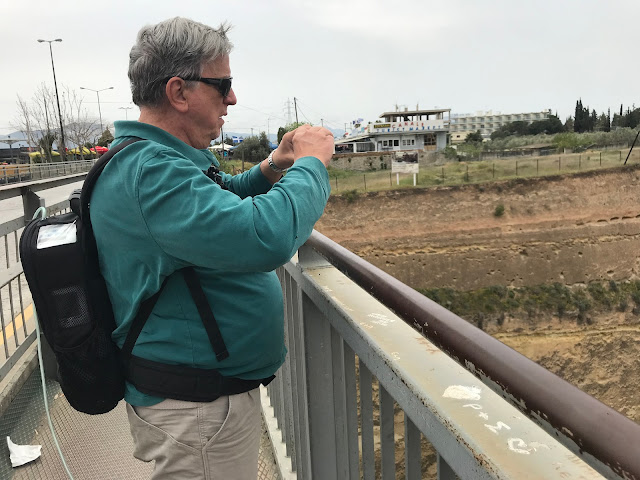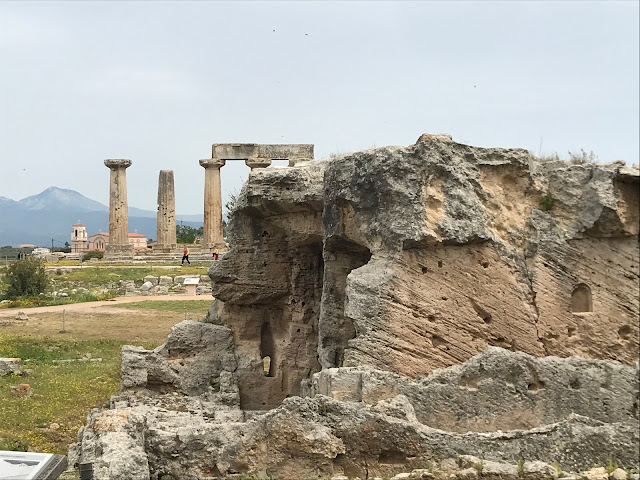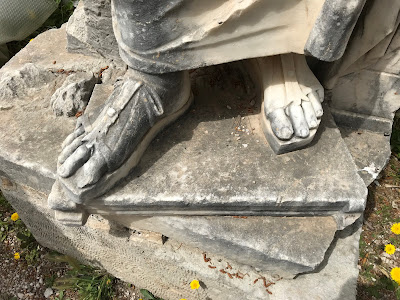April 22, 2022
64 degrees, sunny and lovely!
Athens built the Acropolis. Corinth was a commercial city, interested in purely materialistic things. Today we admire Athens, visit it, preserve the old temples, yet we hardly ever set foot in Corinth. - Harold Urey, Nobel Prizing winning chemist
Not to call Mr. Urey a liar, but I have to wonder if he's ever been to Corinth. In the first century, it was a center for industry, it's true, but they also had 20,000 Jews in their population of over 100,000. There was a synagogue as well as a number of pagan temples. And the Apostle Paul spent 18 months there, teaching and preaching and building up a community of neophyte Christians. To say the people weren't interested in their souls as well as their wallets is to demean them unjustly. Their city is as exquisite as the Athenian ruins, but not quite as well preserved.
 |
| The canal is 4 miles long and connects the Aegean Sea and Ionian Sea and separates the Peleponnese peninsula from the rest of mainland Greece. Ships can't exceed 15,000 tons, 58 ft beams and can only have a draft of 24 feet. |
If the canal had been dug in ancient times, it would have spelled the end of Corinth as a major entry port for Greece. But now, it's far too small to accommodate most vessels. Usually only tourist vessels (not cruise ships!) navigate the canal and avoid the 700 miles needed to go around Peleponnese.
The site at Corinth is being studied and unearthed by the American School of Classical Studies. While we weren't allowed to enter the on-site museum, which was very small and couldn't accommodate all the groups visiting the site, we were still able to see some remarkable remnants of the ancient city just lined up around the museum building.
All that remained of the statue at left was the feet, but just look at the detail! The toenails, the second toe slightly longer than the big toe (a condition shared by only 3-15% of the world's population!), the details of the sandals, and the drape of his clothing indicate that the statue came from Greek's Golden age--the 5th century BC.
 |
| The agora, or marketplace. Merchants would have lived above their shops in a second story. |
 |
| Ancient Peirene fountain not far from the city gates that led out to the Aegean Sea. Legend has it that it was one of Pegasus' favorite watering holes! |
Our time there flew by quickly and our trip back into Piraeus/Athens was much quicker than our drive out to Corinth. All the traffic had been fleeing the city not flooding into it.
I was touched by this site and my imagination ran wild trying to visualize what it all might have been like so many centuries ago.
Also, poppies were everywhere! I need to plant some when we get home. And every time I look at them, I'll think of Corinth.







No comments:
Post a Comment
I'd love to hear from you. Leave a comment and let's chat!